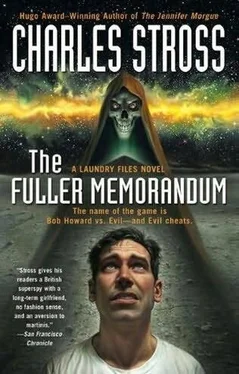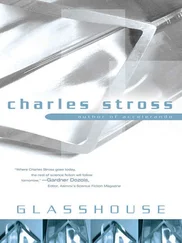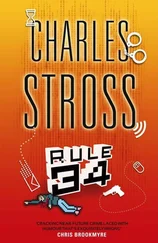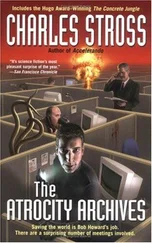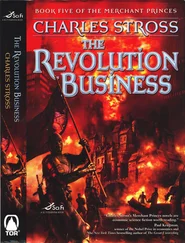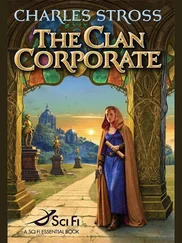“Let me…” She reads out a string of digits and I read it back to her. “Yes, that’s it. If you could just bring it home with you this evening?”
“Remind me again, who was it who didn’t want work brought home?”
“That’s different. This is me being lazy, not you overdoing it!”
I smile. “If you say so.”
“Love you.”
“You too. Bye.”
AT SEVEN MINUTES PAST TWO, I HEAR FOOTSTEPS AND A squeak of wheels that stops outside my door. I pick up a pair of brown manila files I’m through with and stand. “Archive service?” I ask.
The man with the handcart is old and worn before his time. He wears a blue-gray boiler suit and a cloth cap that has seen better days; his skin is as parched as time-stained newsprint. He looks at me with the dumb, vacant eyes of a residual human resource. “Archive service,” he mumbles.
“These are going back.” I hand over the files, and he painstakingly inscribes their numbers on a battered plywood clipboard using a stub of pencil sellotaped to a length of string. “And I’m going with them.”
He stares at me, unblinking. “Document number,” he says.
I roll my eyes. “Give me that.” Taking the clipboard I make up a shelf reference number and write it down in the next space, then copy it onto my left wrist with a pen. “See? I am a document. Take me.”
“Document… number…” His eyes cross for a moment: “Come.” He puts his hands to the handcart and begins to push it along, then glances back at me anxiously. “Come?”
For an RHR he’s remarkably communicative. I tag along behind him as he finishes his round, collecting and distributing brown manila envelopes that smell of dust and long-forgotten secrets. We leave the department behind, heading for the service lifts at the back; Rita doesn’t even raise her head to nod as I walk past.
The heavy freight lift takes forever to descend into the subbasement, creaking and clanking. The lights flicker with the harsh edge of fluorescent tubes on the verge of burnout, and the ventilation fans provide a background white buzz of noise that sets my teeth on edge. There’s nobody and nothing down here except for storerooms and supply lockers: people visit, but only the dead stay.
Handcart man shuffles down a narrow passage lined with fire doors. Pausing before one, he produces an antiquated-looking key and unlocks a padlock-and-chain from around the crash bar. Then he pushes his cart through into a dimly lit space beyond.
“How do you re-lock that?” I ask him.
“Lock… at night,” he mumbles, throwing a big switch like a circuit breaker that’s mounted on the wall just inside the door.
We’re in a narrow, long room with a couple of handcarts parked along one wall. The other side of the room is strange. There’s a depression in the floor, and a hole in each of the narrow ends: rails run along the depression between the holes. Such is the wildly unusual scale of it all that it takes me several seconds to blink it back into the correct perspective and see that I’m standing on the platform of an underground railway station-a narrow-gauge system with tracks about sixty centimeters apart, and an electrified third rail. I hear a sullen rumbling from one of the tunnel mouths, and feel a warm breath of wind on my face, like the belch of a very small dragon. The original MailRail track only ran east to west, but extensions were planned back in the 1920s; I suppose I shouldn’t be surprised to find one here, for what else would commend this extremely boring sixties office block to the Laundry as a temporary headquarters?
I look at handcart man. “Can I ride this?” I ask.
Instead of answering, he pulls a second lever. I shrug. You’d think I’d have learned better than to ask zombies complex questions by now, wouldn’t you?
The rumbling builds to a loud roar, and a remarkable object rolls out of the tunnel and screeches to a halt in the middle of the room.
It’s a train, of course-three carriages, all motorized. But it’s tiny. You could park it in my front hall. The roofs of the carriages barely rise waist-high, and they sport external handles. Handcart man shambles to the front carriage and hinges the roof right up. Not even breaking a sweat, he begins to load the files from his cart into a storage bin.
“Hey, what about”-I focus on the second carriage. It’s got wire mesh sides, and what looks like a bench-“me?”
Handcart man lifts a box of files out of the front carriage, deposits it in his cart, and lowers the lid. Then he walks to the second carriage, lifts the roof, and looks at me expectantly.
“I was afraid you were going to say that,” I mutter, and climb in. The wooden bench seat is about five centimeters above the track bed, and I have to lean backward as he drops the lid with a clang. The carriage is only big enough for a single passenger. It smells musty and dry, as if something died in here a long time ago.
Turning my head sideways, I watch as handcart man walks over to the big circuit breaker and yanks it down and up, down and up. It must be some kind of trackside signal, because a moment later I feel a motor vibrate under me, and the train starts to roll forward. I make myself lie down: it’d be a really great start to the mission to scrape my face off on the tunnel roof. And a moment later I’m off, rattling feetfirst into the darkness under London, on a false-flag mission…
AT ABOUT THE SAME TIME I’M FALLING FEETFIRST INTO A PIECE of railway history, another part of the plot is unfolding. Let me try to reconstruct it for you:
A red-haired woman holding a violin case is making her way along a busy high street in London. Wearing understated trousers and a slightly dated Issey Miyake top, sensible shoes, and a leather bag that’s showing its age, she could be a college lecturer or a musician on her way to practice: without the interview suit, nobody’s going to mistake her for an auction house employee or a civil servant. Which shows how deceptive appearances can be.
Kids and shoppers and office workers in suits and shop staff in uniforms move around her; she threads her way between them, not looking in shop windows or diverting her attention from the destination in hand. Here’s a side street, and she turns the corner wide-avoiding a baby buggy, its owner nattering on her mobile-and strides along it before turning into another, wider street at a corner where a bland seventies office rises six stories above the pavement.
The office has glass doors and a reception desk fronting an austere atrium; a bank of lifts behind it promises a rapid ascent into crowded beige cubicle heaven. The woman approaches reception, and holds up an ID card of some sort. The guard nods, signs her in, then waves her on to the lift bank on the right. She could be a session musician turning up at one of the TV production companies listed on the wall panel beside the reception desk, or a member of staff on her way back from a lunchtime lesson.
But she’s not.
The lift control panel shows five numbered floors. As the door slides closed, the woman pushes the third-floor button, then first floor (twice), then the fourth floor. The lift begins to move. The illuminated floor display tracks it up from ground to first, second, third-and it goes out. Then, safely stranded between indicated floors, the doors open.
There are no cubicles here: only rooms with frosted glass doors that lock shut, and red security lights to warn against intrusion. Some of the rooms are offices, and some of them are laboratories, although the experiments that are conducted in them require little equipment more exotic than desktop computers and hand-wired electronic circuitry.
The red-haired woman makes her way through the building with ease born of familiarity, until she finds room 505. She knocks on the door. “Come in,” the occupant calls, his voice muffled somewhat by the wood.
Читать дальше
